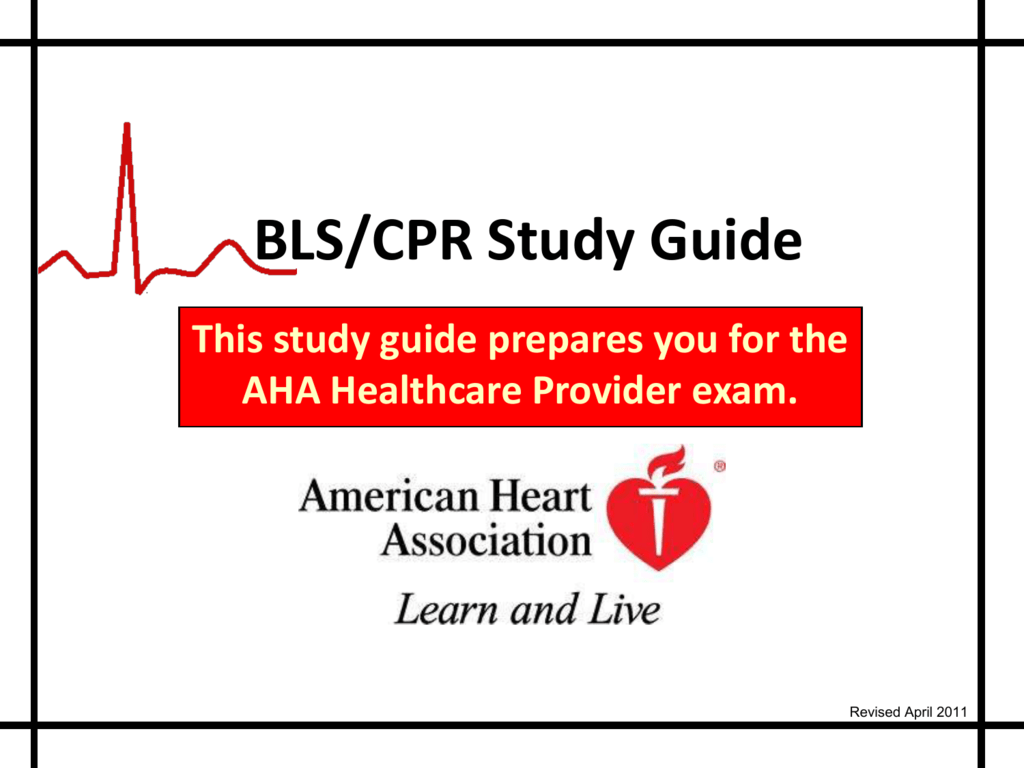Aha 2018 Cpr Study Guide

In 2016, the American Heart Association (AHA) published a paper in the scientific journal Circulation that included guidelines for Cardiopulmonary Resuscitation (CPR) and Emergency Cardiovascular Care (ECC). Current research still affirms that resuscitation, when performed perfectly, increases the survival rate for hospital discharge. The updated AHA guidelines published in 2015 expand on previous recommendations made in 2010 and are perceived to increase the chances of survival in resuscitation. The AHA’s research in 2010 illustrates that resuscitation outcomes are improved when high-quality chest compressions are executed immediately. The factors that define high-quality compressions remain pushing hard and fast. Rate In the AHA paper published in 2012, the prescribed rate of compression was at least 100 compressions per minute. However, in the updated 2015 version of the CPR guideline, a compression rate of 100-120 per minute is now recommended.


An increase in the compression rate is perceived to decrease cardiac output due to incomplete cardiac filling during chest recoil. Depth The current 2015 guidelines define the target depth for adult compressions to be between 2-2.4 inches or 5-6 centimeters. Research analyzed by the AHA revealed that this new recommendation may lead to a decrease in the risk of resuscitation-related injuries including rib fractures. Technique In both the 2010 and 2015 versions, the rescuer’s technique plays a major role in the quality of compressions delivered. In actual emergencies, individuals tend to execute compressions that are inconsistent, shallow, and slow. The updated guidebook still affirms that training and practice are key in developing a good technique. Thorough feedback should be provided in times of training and review, focusing on the rate and depth of the compressions.
Sequence In 2010, the sequence ABC (Airway, Breathing, Compressions) was adjusted to the 2015 version of CAB (Compressions, Airway, Breathing). This version emphasizes performing immediate chest compressions as opposed to delaying compressions in favor of airway assessment or rescue breathing, leading to a significantly improved survival rate. Ratio The preferred ratio of 30 chest compressions to two rescue breaths for one-rescuer CPR in all age groups and in two-rescuer CPR for adults remains prescribed for CPR cycles even in the updated version of the guidebook. A ratio of 15:2 compressions to breaths is still endorsed for two-rescuer CPR for children and infants. Community Superior-quality chest compressions are still the most important factor determining a patient’s survival. The updated guidebook still affirms that in the absence of knowledge of other techniques, applying the basic element of chest compression is still better than using no techniques at all. Leaders at the AHA note that rescuers usually have speakerphones in their mobile devices, allowing bystanders to facilitate instructions coming from 911 EMS dispatchers as rescuers perform hands-only CPR.
In addition, the necessary increased public access for AEDs is still being advocated by the AHA. The American Heart Association released a revised version of the guidelines in 2010, and every five years, the AHA provides another updated version containing revisions regarding CPR and ECC techniques. The content provided in this book is based on the most recent AHA publications on BLS and a comparison between old and updated versions will follow to facilitate an extensive review of the guidebooks. Due to the recent findings favoring early compressions, the traditional sequence of Airway, Breathing, Compression (ABC) was changed to Compressions, Airway, Breathing (CAB) to prevent bystanders from misinterpreting short quick breaths as definitive signs of health, which could lead them to delay the delivery of CPR. The previous rule to “look, listen, and feel” is no longer encouraged.
Aug 21, 2018 - Solutions Manual for Analytical Chemistry 2.1, released summer 2016. Analytical Chemistry 2.0, released fall 2009. David harvey 2009 solution manual. Solutions Manual to Modern Analytical Chemistry by David Harvey. ISBN 0–697–39760–3. Solutions Manual to Analytical Chemistry 2.1 by David Harvey (Summer 2016). Education 2009, 17(3) for an interesting argument that.
Aha 2018 Cpr Study Guidelines
The updated version suggests performing an immediate chest compression in lieu of assessment in cases where the patient is not breathing, has no pulse, or is unresponsive. The revised version mandates an immediate performance of chest compressions during cardiac events.
2017 updates recommend for adults in OHCA (out-of-hospital cardiac arrest), that untrained lay rescuers should provide chest compression only CPR with or without dispatcher assistance. For lay rescuers trained in chest compression only CPR, it is recommended that they provide chest compression only CPR for adults in CPR. For lay rescuers trained in CPR using chest compressions and ventilation, rescue breaths, it is reasonable to provide ventilation, rescue breaths, and chest compressions for the adult in OHCA. High-quality CPR is necessary and it can be achieved with the following steps:.
A consistent compression rate of 100 beats per minute for all persons should be used, at the very least. The compression depth should be between 2-2.4 inches for adult and children, and 1.5 inches for infants. Chest recoil must be expected and allowed after each compression. Few to no interruptions should happen during the CPR.
Interruptions are only permissible for the usage of an AED or when the rescuer decides to change positions. Overventilation is a serious hazard; rescuers should be mindful of their breaths. Whenever applicable, CPR must be carried out by a team of rescuers. Cricoid pressure is no longer a mandatory step.
Bls Study Guide 2018
When checking the patient’s pulse, a standard 10-second check-up is now recommended. If you cannot feel the pulse, start with the compressions immediately. Do not worry if you cannot successfully determine the person’s pulse rate, as even some medical practitioners don’t always do so.